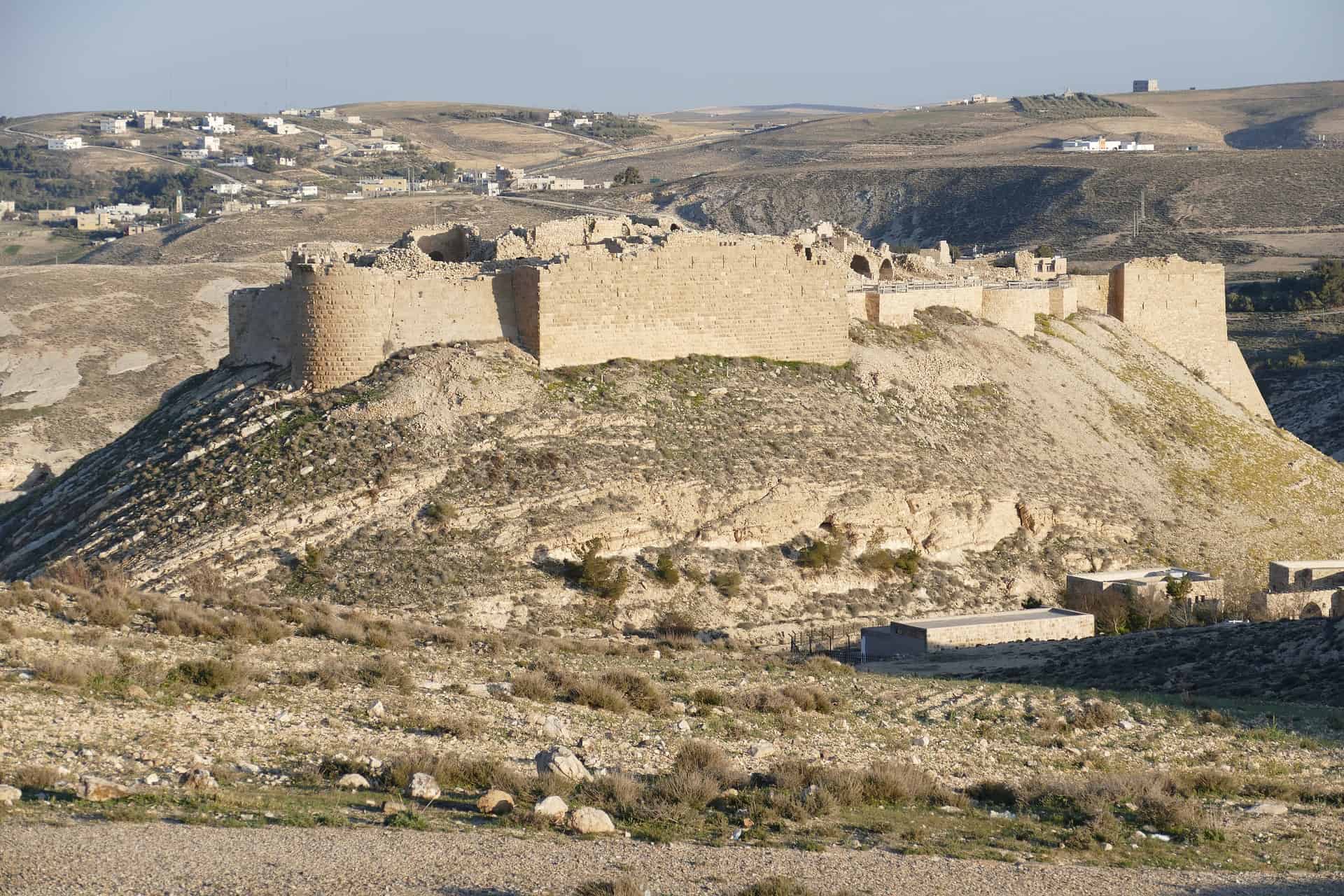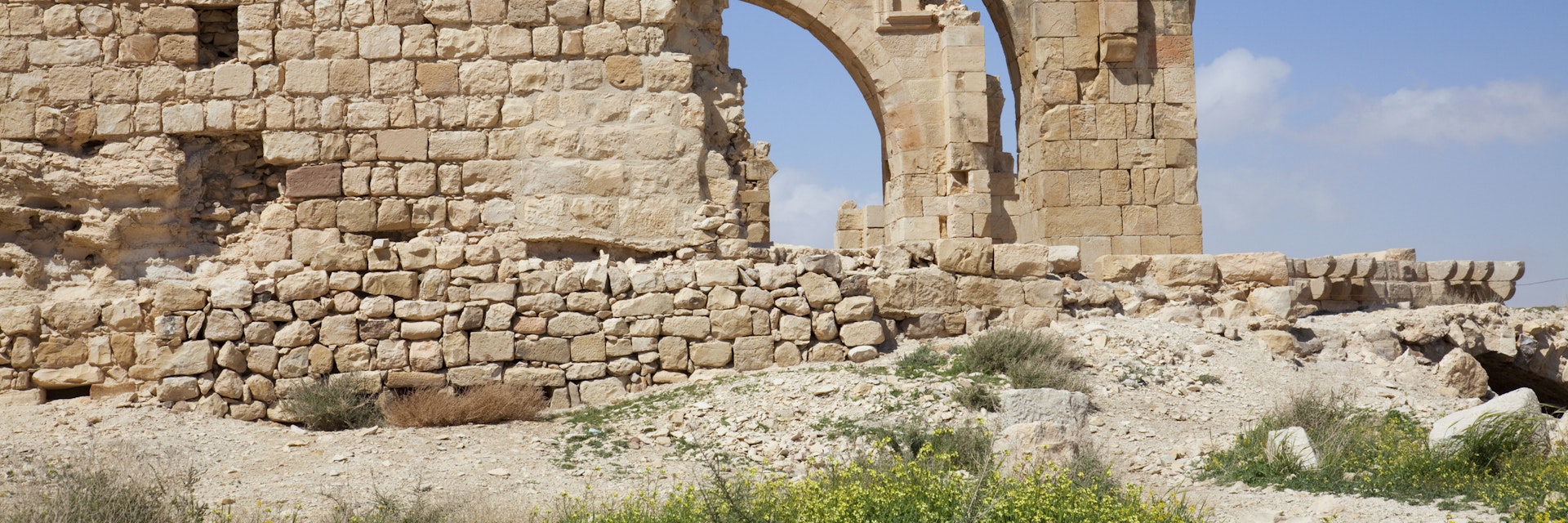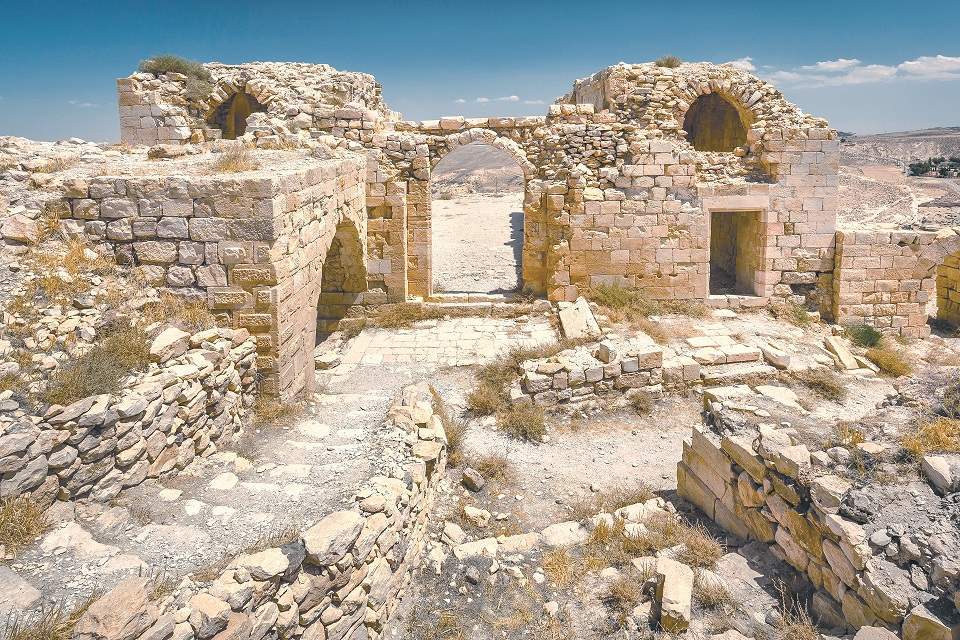Hidden amongst the rocky landscape of Jordan lies a historical treasure often overlooked by tourists. Shobak Castle, also known as Shoubak, is a majestic fortress that dates back to the 12th century. Its ancient walls tell the story of battles, conquests, and alliances between civilizations. Despite its relative obscurity, Shobak Castle is a fascinating destination that offers breathtaking views and a glimpse into Jordan's rich history. Whether you are a history buff or simply a curious traveller, Shobak Castle is a must-visit destination that will inspire you. In this blog post, we will explore Shobak Castle's wonders and discover all its secrets.

Shobak Castle's History & Location
Shobak Castle, also known as Shoubak Castle, is enchanting on a mountain in Jordan's Middle East region. This castle was built in the year 1115 under the rule of King Baldwin I as a form of defence against invading armies. The Crusader king also named the hill Mons Realis or “Royal Mountain,” which is still used by locals today.
For many years, Shobak Castle was under attack by the armies of Saladin, the first sultan of Egypt and Syria. Despite its defenders withstanding numerous assaults, the castle eventually fell in 1189, a year after Karak, after an 18-month siege. In the 14th century, the Mamluks took over the castle, expanding upon many Crusader buildings and scaling the walls to climb inside.
Today, visitors to Shobak Castle can experience many of its structures and ruins that are still well-preserved. There are two churches, one of which was reconstructed and contains a small baptistery. On the other hand, the second church contains catacombs underneath, Islamic tablets, Christian carvings and even Saladin's very simple throne.
Another impressive landmark in Shobak Castle is its well, which sits cut into a deep rock. The well, with its 375 steps leading down to its bottom, is a captivating feature that visitors can walk down to the spring feeding the surrounding area and nearby villages.
Shobak Castle is located along the famous King's Highway, some 118 miles or about two hours and 35 minutes away from the capital city of Amman. Visitors can hire a local guide for around JD 10 to learn more about the castle's rich history and explore its many landmarks.
Shobak Castle's location in the desert is striking and provides visitors with a world-away atmosphere from their daily lives. As one of Jordan's most famous crusader castles, the site is a must-visit for travellers interested in history and architecture. The site is open during daylight hours, visitors can explore the grounds for an extended day trip, and entrance is 1JD or free with the Jordan Pass. [1][2]
For many years, Shobak Castle was under attack by the armies of Saladin, the first sultan of Egypt and Syria. Despite its defenders withstanding numerous assaults, the castle eventually fell in 1189, a year after Karak, after an 18-month siege. In the 14th century, the Mamluks took over the castle, expanding upon many Crusader buildings and scaling the walls to climb inside.
Today, visitors to Shobak Castle can experience many of its structures and ruins that are still well-preserved. There are two churches, one of which was reconstructed and contains a small baptistery. On the other hand, the second church contains catacombs underneath, Islamic tablets, Christian carvings and even Saladin's very simple throne.
Another impressive landmark in Shobak Castle is its well, which sits cut into a deep rock. The well, with its 375 steps leading down to its bottom, is a captivating feature that visitors can walk down to the spring feeding the surrounding area and nearby villages.
Shobak Castle is located along the famous King's Highway, some 118 miles or about two hours and 35 minutes away from the capital city of Amman. Visitors can hire a local guide for around JD 10 to learn more about the castle's rich history and explore its many landmarks.
Shobak Castle's location in the desert is striking and provides visitors with a world-away atmosphere from their daily lives. As one of Jordan's most famous crusader castles, the site is a must-visit for travellers interested in history and architecture. The site is open during daylight hours, visitors can explore the grounds for an extended day trip, and entrance is 1JD or free with the Jordan Pass. [1][2]

Construction by King Baldwin I
- King Baldwin, I was a renowned ruler of the Crusader States and had a reputation for being a skilled military tactician and leader.
- During his expedition to the Red Sea, King Baldwin I founded the Shobak Castle in Jordan in 1115 CE.
- The castle was built for defence and to control and tax caravans using Trans-Jordan’s main highway, the King's Highway.
- Shobak Castle was named 'Montreal' and was strategically located to monitor enemies' movement.
- Raynold of Chatillon manufactured mobile vessels in Shobak Castle to transfer them to the Red Sea and then conquer and loot Mecca.
- Shobak Castle was under siege for 18 months before it was conquered and taken over by Saladin in 1189 CE.
- The Mamluks, a group of Muslim soldiers, later used and developed the castle.
- Shobak Castle was abandoned only in the 1950s and was never properly excavated.
- Despite being abandoned, some parts of the castle remain well-preserved and impressive to visitors.
- Tourists can explore the castle's ruins, including two churches, a secret tunnel leading to a subterranean spring, and a Mamluk school.
Overall, the Shobak Castle in Jordan is an enchanting castle built by King Baldwin I in 1115 CE for defense and strategic purposes. Despite being abandoned in the 1950s, the castle remains well-preserved and is a popular tourist destination for those interested in exploring the ruins and learning about its rich history. [3][4]

Defence Against Salahuddin Al-Ayyoubi
Salahuddin Al-Ayyubi, also known as Saladin, was the first sultan of Egypt and Syria. He was a prominent Muslim who led many military campaigns against the Crusaders. If you are visiting Jordan, you may be interested in learning how the crusader castle of Shobak defended itself against Salahuddin Al-Ayyubi. Here are some tips on how to defend against this famous Muslim warrior.
- Build a Strong Fortress – Baldwin I, the Crusader King who built Shobak castle, understood the importance of building a strong fortress. He designed the castle with thick walls, strategic towers, and ample supplies. The castle also had hidden passages, which made it difficult for the enemy to attack.
- Train Your Defenders – Shobak castle defenders were well-trained and equipped to fight any enemy. They were trained in using weapons like swords, bows, and arrows. They were also well-versed in military tactics and could hold their ground against a siege.
- Fortify Water Supply – The defenders of Shobak Castle knew that water was essential for their survival. They had built a secret passageway that led to a subterranean spring outside the castle. They could easily access the water supply inside the castle without exposing themselves to enemy fire.
- Use Boiling Oil – The defenders of Shobak Castle used boiling oil to repel attackers. They would pour boiling oil from the castle walls onto the enemies below, causing them to retreat or abandon their attack.
- Keep Resources Close – The defenders of Shobak Castle stored their resources close to them. They had ample food, water, and weapons to survive a prolonged siege. They also had a few escape routes in case of an emergency.
By following these tips, the defenders of Shobak Castle could hold out against Salahuddin Al-Ayyubi's army. However, it is essential to note that the outcome of any battle depends on various factors, including timing, strategy, and luck. Visiting Shobak castle can give you a glimpse into the past and help you appreciate the effort the defenders put into protecting their castle against their enemies. [5][6]

Occupied by Mamluks in the 14th Century
In the 14th century, the Mamluks took over Shobak Castle and transformed it into a beautifully renovated fortress. The walls are adorned with Kufic and Quranic inscriptions that add a touch of elegance to the estate. A large watchtower was also built, and the Crusader court was repurposed as a school. The castle also contained some rooms used as olive presses and a second church. Visitors today can still see the cisterns, pipes, and baths and the rainwater harvesting mechanisms. The Mamluks' great attention to detail helped to revive the castle, which the Crusaders previously occupied in the 12th century. With its stunning position on the knoll overlooking the trade routes, the castle served as a strong sentinel for the kingdom of Jerusalem in the Crusader district of Outrejordain. Today, the site offers a wonderfully romantic destination for visitors who seek a tranquil place for peaceful reflection while enjoying the magnificent views. The bones of the castle give a startling insight into its unique anatomy, regardless of whether one sees it as a Crusader castle or a Mamluk fortress. The shrine to Abu Suleiman al-Dirany, below the castle, is another area of interest. Women still come here to leave their handprints in henna, requesting children and healing for the sick. Indeed, the Mamluks' occupation of Shobak Castle was a defining moment in its history, and visitors can still appreciate and admire the remarkable transformations they made to the castle complex. [7][8]

Dramatic Location & Remote Setting
How To Guide: Dramatic Location & Remote Setting at Shobak Castle (Shoubak) in Jordan
Shobak Castle (Shoubak) in Jordan is known for its scenic location and remote setting, making it a must-visit destination for history and nature enthusiasts. Here’s a guide on how to fully experience this enchanting castle:
1. Plan your trip
Shobak Castle is located along the famous King’s Highway, around two hours and 35 minutes from Amman and just a 40-minute drive from the historic site of Petra. The site is open during daylight hours, with entrance fees of 1 JD (1.41 USD). Visitors who have purchased the Jordan Pass can enter for free.
2. Hire a local guide
Local guides who are experts in the castle’s history and architecture are available at the gate for around 10 JD (14.10 USD). They will provide valuable information about the castle and ensure a deeper understanding of its significance.
3. Explore the castle
As you climb from the entrance, you’ll see reconstructed Crusader buildings on the left. Soon after passing them, you’ll see one of the two churches in the castle on the left. The church has an elegant apse supported by two smaller alcoves and a room leading to the west. There are traces of water channels leading from above to the north wall.
Turn left and descend 375 steps into an amazing secret passageway leading to a subterranean spring. Tread carefully using a torch, and don’t attempt it if you are claustrophobic. Alternatively, continue past the tunnel for 50m to a two-story Mamluk school building. At the northern end of the castle, you’ll see a semicircular tower with four arrow slits and Quranic inscriptions carved in Kufic script around the outside of the keep, possibly from the time of Saladin.
Continue south along the eastern perimeter and pass by the reconstructed tower and the baths on the right. On the left is a reconstructed Mamluk palace, just past the second church. In a room on the left side, as you enter the second church, you can see a weathered carving of a Crusader cross above a door in the east wall. Beneath the church are the catacombs that contain Islamic tablets, Christian carvings, large spherical rocks used in catapults, and what is said to be Saladin’s very simple throne.
4. Take in the scenery
Shobak Castle is set atop a dramatic hill, formerly called Mons Realis or the Royal Mountain, imposing its might on the surrounding countryside. Visitors can capture stunning views of the landscape from the castle.
5. Engage with the local culture
The castle is historically significant, and today visitors are greeted by staff dressed in traditional Mamluk costumes who guard the entrance. They will pose for photos or engage visitors in mock sword fights. It’s an opportunity to learn more about the local culture.
In summary, a trip to Shobak Castle allows one to delve into history and explore a remote and dramatic setting. Hire a local guide, explore the castle, take in the scenery, and engage with the local culture. Have a great trip! [9][10]
Shobak Castle (Shoubak) in Jordan is known for its scenic location and remote setting, making it a must-visit destination for history and nature enthusiasts. Here’s a guide on how to fully experience this enchanting castle:
1. Plan your trip
Shobak Castle is located along the famous King’s Highway, around two hours and 35 minutes from Amman and just a 40-minute drive from the historic site of Petra. The site is open during daylight hours, with entrance fees of 1 JD (1.41 USD). Visitors who have purchased the Jordan Pass can enter for free.
2. Hire a local guide
Local guides who are experts in the castle’s history and architecture are available at the gate for around 10 JD (14.10 USD). They will provide valuable information about the castle and ensure a deeper understanding of its significance.
3. Explore the castle
As you climb from the entrance, you’ll see reconstructed Crusader buildings on the left. Soon after passing them, you’ll see one of the two churches in the castle on the left. The church has an elegant apse supported by two smaller alcoves and a room leading to the west. There are traces of water channels leading from above to the north wall.
Turn left and descend 375 steps into an amazing secret passageway leading to a subterranean spring. Tread carefully using a torch, and don’t attempt it if you are claustrophobic. Alternatively, continue past the tunnel for 50m to a two-story Mamluk school building. At the northern end of the castle, you’ll see a semicircular tower with four arrow slits and Quranic inscriptions carved in Kufic script around the outside of the keep, possibly from the time of Saladin.
Continue south along the eastern perimeter and pass by the reconstructed tower and the baths on the right. On the left is a reconstructed Mamluk palace, just past the second church. In a room on the left side, as you enter the second church, you can see a weathered carving of a Crusader cross above a door in the east wall. Beneath the church are the catacombs that contain Islamic tablets, Christian carvings, large spherical rocks used in catapults, and what is said to be Saladin’s very simple throne.
4. Take in the scenery
Shobak Castle is set atop a dramatic hill, formerly called Mons Realis or the Royal Mountain, imposing its might on the surrounding countryside. Visitors can capture stunning views of the landscape from the castle.
5. Engage with the local culture
The castle is historically significant, and today visitors are greeted by staff dressed in traditional Mamluk costumes who guard the entrance. They will pose for photos or engage visitors in mock sword fights. It’s an opportunity to learn more about the local culture.
In summary, a trip to Shobak Castle allows one to delve into history and explore a remote and dramatic setting. Hire a local guide, explore the castle, take in the scenery, and engage with the local culture. Have a great trip! [9][10]
